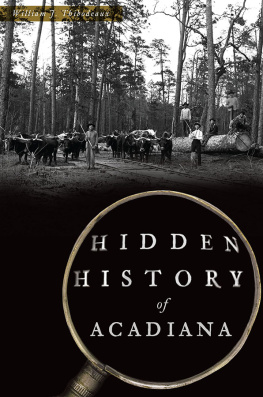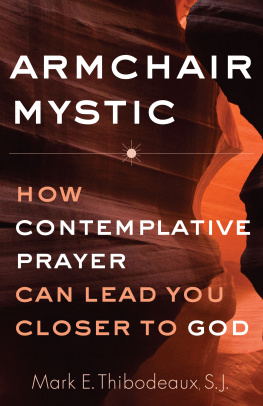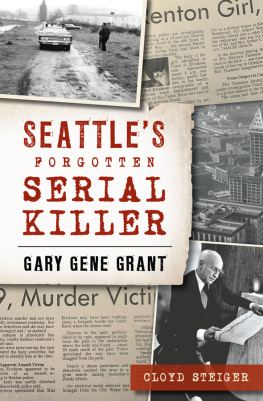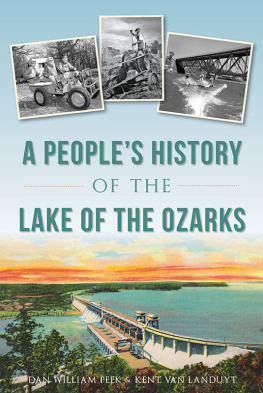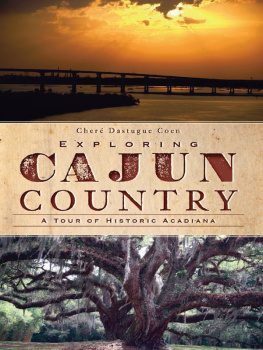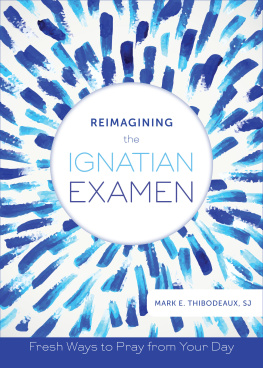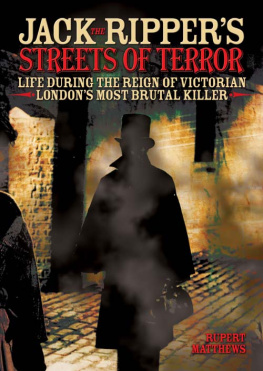

Published by The History Press
Charleston, SC
www.historypress.com
Copyright 2019 by William J. Thibodeaux
All rights reserved
E-Book year 2019
First published 2019
ISBN 978.1.43966.746.0
Library of Congress Control Number: 2019937038
print edition ISBN 978.1.46714.357.8
Notice: The information in this book is true and complete to the best of our knowledge. It is offered without guarantee on the part of the author or The History Press. The author and The History Press disclaim all liability in connection with the use of this book.
All rights reserved. No part of this book may be reproduced or transmitted in any form whatsoever without prior written permission from the publisher except in the case of brief quotations embodied in critical articles and reviews.
CONTENTS
ACKNOWLEDGEMENTS
I am especially grateful to my wife, Judy, for her invaluable support and encouragement and for putting up with me spending countless hours researching, writing and compiling material for this work. She spent countless hours reading, editing and correcting spelling and grammatical errors.
Thanks go to The History Press, especially my commissioning editor, Joe Gartrell, who helped me tremendously along the way;
Jack Winn for his friendship and for his great cinematography skills;
J. Albert Guilbeau, my dear friend (now deceased), for all the wonderful stories and the Guilbeau family, especially Biker Bob, Simone and Brett Myhand of Carencro;
Barry Ancelet, professor emeritus of francophone studies and folklore at the University of Louisiana at Lafayette, for sharing local stories;
Allen LeBlanc of Abbeville for the many stories he has given me over the years;
Julie Simoneaux, library associate at Iberville Parish Library;
James Ackers of St. Martinville for his great memory and for sharing his stories;
The creators of the fantastic nonfiction book The Slaughterhouse Cases: Regulation, Reconstruction, and the Fourteenth Amendment, Ronald M. Labb and Jonathan Lurie, for their exhaustive researchit is one of my favorite history books pertaining to early New Orleans;
Dr. David Edmonds for announcing the treasure trove of unpublished manuscripts locked away in the National Archives;
Dr. Eddie Palmer for information about early cattle trails mentioned in The Slaughterhouse Cases;
Professor C. Ray Brassieur for his talks on early cattle drives to New Orleans;
Professor Mike LeBlanc of Lafayette for his continued help with valuable information on photographs and mapmaking;
Alvin Bethard of Lafayette for finding hidden topics for me to research;
Joseph J.C. Moreaux of Houston for his constant help with early railroads of Louisiana;
Ray Duplechain of Belle Chasse for his help with information on early railroads of Louisiana;
Bill Lamar of Morgan City for his continued help with railroads and photographs of old depots;
Burt Suir of Lafayette for sharing stories about the railroad;
Ann Mire of Crowley for her excellent help obtaining photographs of Acadia Parish;
Jean Vidrine of Ville Platte for her continued help on material at Dupr Library;
Bob Broussard, historian from Centerville, for constantly finding historical material to share;
Russell Landry of Kaplan for his valuable insight on salt mines and for sharing personal information;
Beverly Gisclair of Kaplan for sharing her personal story about the Belle Isle salt mine disaster;
Brenda Daigle for sharing her stories of her father, the late Pierre Varmon Daigle, and his many accomplishments in Cajun culture, especially his writing about Cajun music;
The late Carlos Daigle, son of Varmon Daigle, for valuable information concerning his father;
The late Selise Daigle of Pointe Noir for sharing stories about Pointe Noir and local musicians;
Pat Daigle of Church Point for sharing stories about Pointe Noir, Doris Matte and various musicians;
Paul Daigle of Pointe Noir for sharing stories of Cajun music and musicians of long ago;
Kelly Hebert of Church Point for sharing stories of his mother and father, Adam Hebert and other musicians;
Whitney Sonnier of Pointe Noir for sharing stories of Cajun music, musicians and dancers;
Gercie Daigle of Church Point for sharing information on Auguste and Octave Thibodeaux and other related stories;
Viola Fontenot of Lafayette for sharing her stories of the Great Depression and of Cajun culture;
The late Albert Guilbeau, again, for sharing stories about the shootout at the Lafayette railyard;
Helen Gaspard Hayes of Gueydan for sharing photographs and stories of Vermilion Parish;
Jerry Clark of Morse for sharing stories of Acadia Parish;
Wiley Butch Clark of Kaplan for sharing stories of Cajun culture;
Rogers Romero of New Iberia for his friendship, continued support and photographs of New Iberia;
Jack Patin of Lafayette for his personal stories about his father and his grandfather, who worked for the Southern Pacific railroad;
Warren Perrin for his continued support and sharing stories of Charles Frederick from Erath;
The Council for the Development of French in Louisiana (CODOFIL) and Louisiana Public Broadcasting (LPB) for interviewing Ralph LeBlanc entirely in French in 1987;
Albert Buzz LeBlanc of Breaux Bridge for sharing stories, newspaper articles and photographs of Operation High Jump;
Eric Castille for sharing interesting tidbits of historical info, stories and great books as well as good conversations;
Deen Thomas for his generous offer of historical photographs;
Bevan Bros. Photography of Eunice for its generous offer of historical photographs;
Acadia Parish Library and its wonderful staff, also the tireless genealogy workers;
Lafayette Parish clerk of court Louis J. Perret and his gracious office staff;
Pat Hebert of Branch for valuable knowledge pertaining to local history;
Francois Comeaux of Maurice for sharing stories of Vermilion Parish;
Richard Landry of Maurice for sharing stories of Vermilion Parish;
Louis Broussard of Milton for sharing stories of his grandfather and the Wild West;
Herman Venable of Lafayette for his many stories pertaining to the Great Depression and Pointe Noir;
Franklin and Norma Price for sharing stories of trapping, fishing and shrimping;
Ms. Louella, Maurice librarian, for the gracious help;
And last but certainly not least, my friend Ms. Pat Segura of Abbeville for encouraging me to write a book. Well, here it is.
INTRODUCTION
Hidden History of Acadiana is a collection of fascinating short stories that chronicles south Louisianas enormous and diverse history and heritage. We are keeping local history alive in sepia tones, to borrow from Ron Charles, a great writer for the Washington Post. All the following stories are nonfiction, and they are about people, places and events of long ago. Some date back to the antebellum period, but most take place during the late 1800s and early 1900s, like Sketch of Vermilion Parish. In the early 1900s, a notable historian wrote a series of sketches about the parish. He described in detail the near perfectly circular ponds that were thickly interspersed in an unspecified order and were found only in Vermilion and Iberia Parishes. These ponds ranged in size from 50 to 150 feet in diameter and were perhaps no more than 12 to 24 inches deep. A team of leading scientists during that era determined that the ponds werent the work of indigenous people. The question begs to be asked, if the ponds were not man-made, then what created them?
Next page
